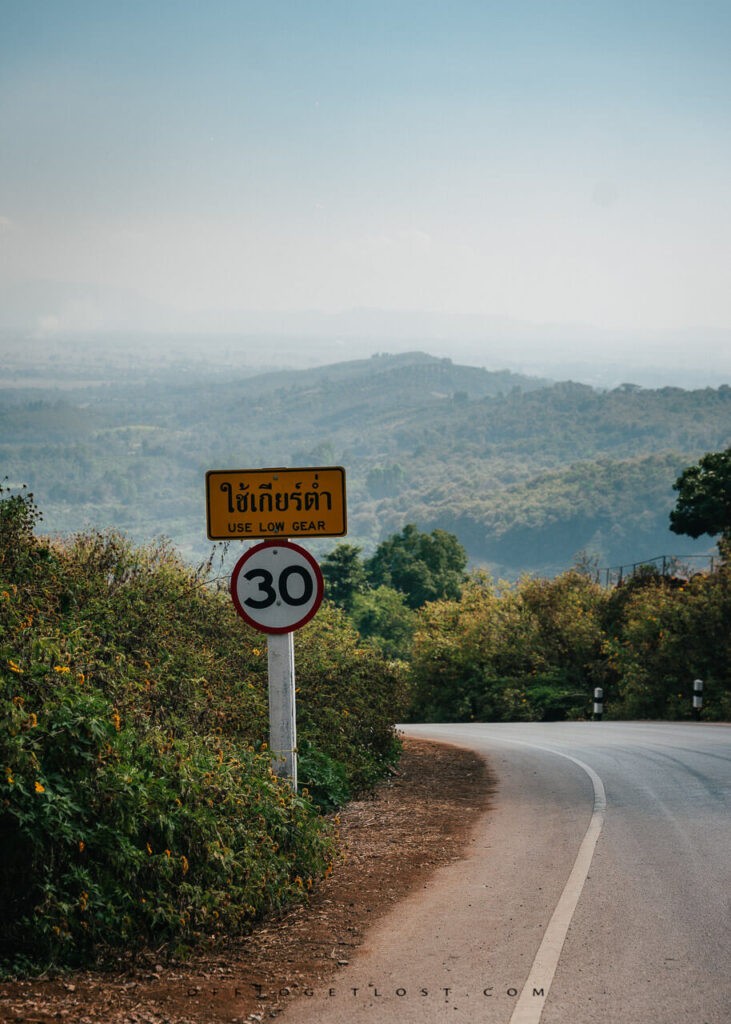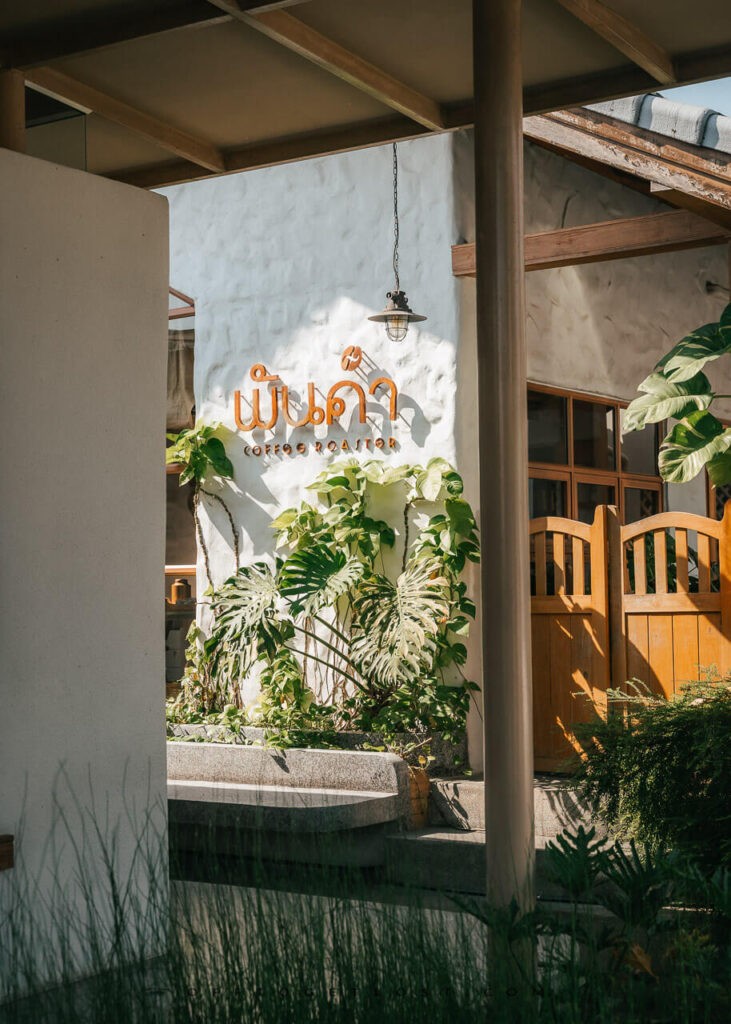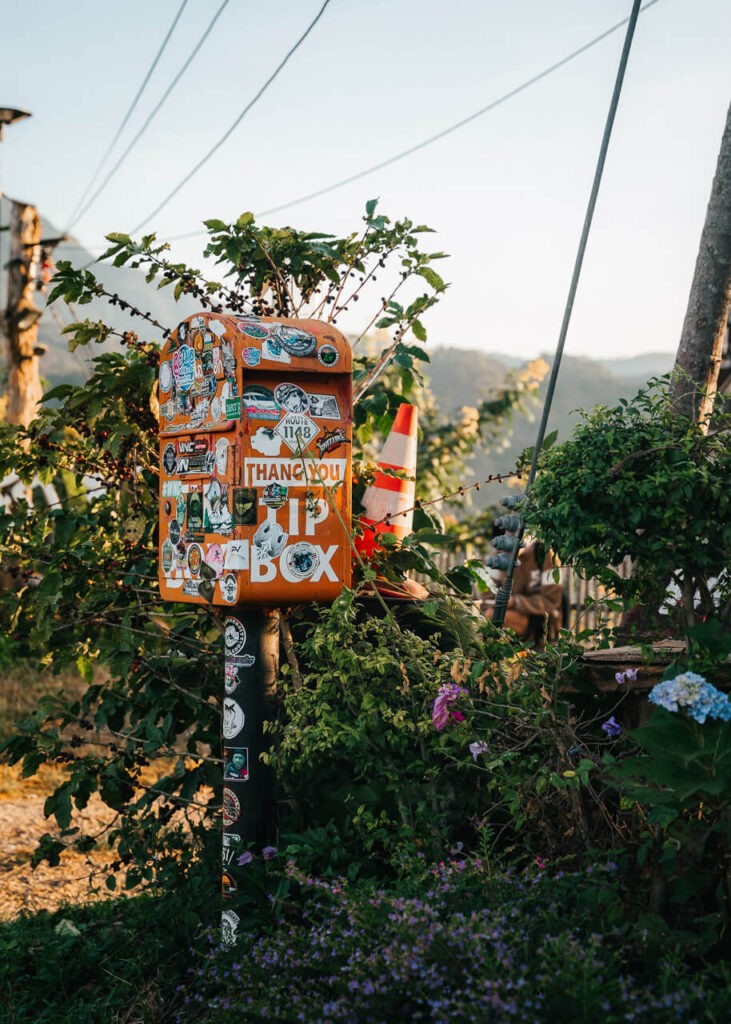Are you planning a trip to Vietnam and wondering about the safety of Phu Lang pottery for food? Yes, Phu Lang pottery can be safe for food use, especially if it’s certified lead-free. SIXT.VN offers services to help you explore Vietnam, including Phu Lang, ensuring you have a safe and enriching cultural experience. Learn about Vietnamese ceramics and travel tips for your upcoming trip.
1. What is Phu Lang Pottery and Why is it Famous?
Phu Lang pottery is a traditional Vietnamese ceramic art form originating from Phu Lang village in Bac Ninh province, near Hanoi. Its fame stems from:
- Long History: It has centuries of history, dating back to the Ly Dynasty (1009-1225).
- Unique Techniques: The pottery uses unique firing and glazing techniques passed down through generations.
- Distinct Style: Characterized by its rustic look, durable construction, and use of natural clay.
- Cultural Significance: It’s deeply embedded in Vietnamese culture and heritage.
- Variety of Products: Making everything from decorative items to functional cookware.
- Economic Importance: It supports the local economy and sustains the traditional craft.
- Tourist Attraction: Drawing tourists interested in Vietnamese culture and traditional crafts.
 Traditional Phu Lang pottery kiln with various ceramic products displayed outside
Traditional Phu Lang pottery kiln with various ceramic products displayed outside
2. What are the Materials Used in Making Phu Lang Pottery?
Phu Lang pottery relies on several key materials, each contributing to its unique characteristics:
- Clay: The primary material, sourced locally from the Red River Delta. This clay is rich in iron, giving the pottery its distinctive reddish-brown color after firing.
- Glazes: Traditionally made from natural materials like wood ash, rice husk ash, and lime. These glazes create a variety of colors and textures.
- Colorants: Natural oxides, such as iron oxide (for reds and browns), cobalt oxide (for blues), and manganese dioxide (for blacks), are used to color the glazes.
- Fuel: Traditionally, wood is used to fire the kilns, though some workshops have transitioned to gas or electric kilns to better control the firing process and reduce emissions.
- Water: Essential for mixing the clay, preparing glazes, and cleaning tools.
- Sand: Sometimes used to prevent pieces from sticking together during firing.
3. Is Lead Used in Phu Lang Pottery?
Lead is not traditionally used in authentic Phu Lang pottery. Traditional glazes are made from natural materials and oxides, avoiding lead-based additives. However, some manufacturers, in the past, or those focusing on cost reduction, might have used leaded glazes to achieve specific colors or finishes more cheaply. Lead can leach into food, posing health risks, especially with acidic foods or high temperatures.
4. How Can You Identify Lead-Free Phu Lang Pottery?
Identifying lead-free Phu Lang pottery involves several strategies:
- Ask the Seller: Inquire directly about the presence of lead in the pottery. Reputable sellers should provide information about their products’ safety.
- Check for Certifications: Look for certifications from recognized organizations that test for lead content in ceramics.
- Examine the Glaze: Lead-free glazes often have a more natural, less glossy appearance.
- Test the Pottery: Use a lead testing kit, available at most hardware stores, to test the pottery yourself.
- Buy from Trusted Sources: Purchase from established workshops or stores known for their commitment to safety and quality.
- Look for Markings: Some manufacturers mark their pottery as “lead-free.”
- Consider the Price: Authentically lead-free pottery made with traditional methods can be more expensive.
- Research the Workshop: Learn about the practices and materials used by the workshop or manufacturer.
5. What are the Health Risks Associated with Lead in Pottery?
The health risks associated with lead in pottery are significant:
- Lead Poisoning: Lead can leach into food and drinks, leading to lead poisoning.
- Neurological Effects: Lead exposure can cause neurological damage, especially in children.
- Developmental Problems: Lead can impair cognitive and physical development in children.
- Kidney Damage: Lead accumulates in the kidneys, leading to kidney damage and disease.
- High Blood Pressure: Lead exposure can increase blood pressure and the risk of cardiovascular disease.
- Reproductive Issues: Lead can affect reproductive health in both men and women.
- Gastrointestinal Problems: Lead poisoning can cause abdominal pain, nausea, and vomiting.
- Anemia: Lead can interfere with the production of red blood cells, leading to anemia.
- Behavioral Problems: Lead exposure has been linked to behavioral issues, such as aggression and hyperactivity.
6. What are the Regulations Regarding Lead in Foodware?
Regulations regarding lead in foodware vary by country and region, but generally include:
- United States: The FDA sets limits on lead leaching from ceramicware.
- European Union: The EU has strict regulations on lead content in food contact materials.
- California: Proposition 65 requires warnings on products containing lead.
- Canada: Health Canada regulates lead in foodware to ensure safety.
- Australia and New Zealand: FSANZ sets standards for lead in food contact materials.
- Japan: Japan has standards for lead content in foodware.
- China: China has national standards for lead in ceramic products.
- Vietnam: Vietnam has regulations on the safety of food contact materials, including ceramics.
7. What Types of Phu Lang Pottery are Typically Used for Food?
Several types of Phu Lang pottery are commonly used for food-related purposes:
- Bowls: Used for serving rice, soups, and other dishes.
- Plates: Used for serving main courses and side dishes.
- Teapots and Teacups: Used for brewing and serving tea.
- Jars and Containers: Used for storing food items like pickles, sauces, and grains.
- Cooking Pots: Used for cooking various dishes over a stove or open fire.
- Mortars and Pestles: Used for grinding spices and herbs.
- Rice Cookers: Traditional clay pots used for cooking rice.
- Water Filters: Clay-based filters used to purify drinking water.
- Serving Dishes: Decorative dishes used for serving food at special occasions.
8. How Can You Ensure the Longevity of Your Phu Lang Pottery?
To ensure the longevity of your Phu Lang pottery, follow these guidelines:
- Avoid Sudden Temperature Changes: Prevent cracking by gradually heating or cooling the pottery.
- Hand Wash: Use warm water and a mild detergent to avoid damaging the glaze.
- Avoid Abrasive Cleaners: Do not use harsh scrubbing pads or chemicals.
- Dry Thoroughly: Ensure the pottery is completely dry before storing.
- Store Carefully: Place the pottery in a safe location to prevent chipping or breaking.
- Avoid Microwave Use: Unless specified as microwave-safe, avoid using it in the microwave.
- Avoid Dishwasher Use: Hand washing is always preferable to protect the pottery.
- Handle with Care: Handle the pottery gently to prevent damage.
- Regular Inspection: Check for cracks or chips regularly.
9. Where Can You Buy Authentic and Safe Phu Lang Pottery?
To buy authentic and safe Phu Lang pottery, consider these options:
- Phu Lang Village: Visit the village to buy directly from workshops.
- Reputable Stores in Hanoi: Find stores specializing in high-quality Vietnamese ceramics.
- Online Retailers: Purchase from reputable online retailers with certified products.
- Craft Fairs: Attend craft fairs and markets to find authentic pottery.
- Museum Shops: Some museums sell high-quality, authentic Phu Lang pottery.
- Directly from Artisans: Contact artisans directly for custom or unique pieces.
10. How Does Phu Lang Pottery Contribute to Sustainable Tourism?
Phu Lang pottery contributes to sustainable tourism in several ways:
- Preserving Cultural Heritage: Supports the continuation of traditional craft.
- Supporting Local Economy: Provides income for artisans and their families.
- Promoting Eco-Friendly Practices: Encourages the use of natural materials and traditional techniques.
- Reducing Environmental Impact: Emphasizes sustainable production methods.
- Educating Tourists: Offers insights into Vietnamese culture and craftsmanship.
- Creating Authentic Experiences: Provides unique and memorable travel experiences.
- Encouraging Responsible Consumption: Promotes the purchase of locally made, sustainable products.
- Empowering Local Communities: Helps maintain cultural identity and community pride.
- Fostering Cultural Exchange: Creates opportunities for interaction between tourists and local artisans.
11. Are There Any Famous Phu Lang Pottery Artists You Should Know?
While Phu Lang pottery is often a collective craft, some notable artisans have gained recognition:
- Nguyen Van Toan: Known for his innovative designs and preservation efforts.
- Tran Thi Thu Ha: Renowned for her mastery of traditional glazing techniques.
- Le Xuan Tung: Famous for his intricate ceramic sculptures.
- Pham Van Luc: Recognized for his dedication to using sustainable materials.
- Hoang Thi Mai: Known for her unique and contemporary ceramic art.
12. What are Some Common Designs and Motifs Found in Phu Lang Pottery?
Common designs and motifs found in Phu Lang pottery include:
- Dragons: Symbolizing power, good fortune, and prosperity.
- Phoenixes: Representing rebirth, immortality, and grace.
- Lotus Flowers: Signifying purity, enlightenment, and spiritual awakening.
- Peonies: Representing wealth, honor, and beauty.
- Landscapes: Depicting scenes of Vietnamese countryside.
- Geometric Patterns: Including intricate and symmetrical designs.
- Calligraphy: Featuring traditional Vietnamese script.
- Animals: Such as fish, birds, and other auspicious creatures.
- Floral Patterns: Various types of flowers and plants.
- Historical Figures: Depicting characters from Vietnamese legends and history.
 Variety of Phu Lang pottery products displayed on wooden shelves in a workshop
Variety of Phu Lang pottery products displayed on wooden shelves in a workshop
13. How Does the Firing Process Affect the Safety of Phu Lang Pottery?
The firing process significantly affects the safety of Phu Lang pottery:
- High Temperatures: Proper firing at high temperatures ensures the clay vitrifies and becomes non-porous.
- Glaze Maturation: High temperatures melt the glaze, creating a protective layer that prevents lead leaching.
- Lead Stabilization: If lead is present, proper firing can stabilize it, reducing the risk of leaching.
- Material Bonding: Firing bonds the clay and glaze together, enhancing durability.
- Toxin Removal: High temperatures can burn off organic impurities.
- Strength and Durability: Firing increases the pottery’s strength and resistance to cracking.
- Water Resistance: Properly fired pottery becomes water-resistant, preventing bacterial growth.
- Safety Standards: Adequate firing helps meet safety standards for food contact materials.
14. What are Some Alternative Types of Vietnamese Pottery?
Besides Phu Lang pottery, Vietnam boasts several other distinctive pottery traditions:
- Bat Trang Pottery: Known for its white glaze and blue decorative patterns, near Hanoi.
- Thanh Ha Pottery: Famous for its terracotta products, in Hoi An.
- Bien Hoa Pottery: Characterized by its colorful glazes, near Ho Chi Minh City.
- Chu Dau Pottery: Known for its delicate designs, from Hai Duong province.
- Bau Truc Pottery: Made by the Cham ethnic group, known for its unique hand-building techniques.
15. How Can SIXT.VN Enhance Your Trip to Phu Lang?
SIXT.VN can enhance your trip to Phu Lang in several ways:
- Transportation Services: Providing convenient and reliable transportation to Phu Lang from Hanoi or other cities.
- Accommodation Booking: Helping you find the best hotels or guesthouses near Phu Lang.
- Guided Tours: Offering guided tours of Phu Lang village, including pottery workshops.
- Translation Services: Providing translation assistance for better communication.
- Travel Information: Offering detailed information about Phu Lang and surrounding areas.
- Customized Itineraries: Creating personalized travel itineraries to suit your interests.
- Local Insights: Sharing insider tips on the best places to visit and things to do in Phu Lang.
- Emergency Assistance: Providing support in case of any emergencies during your trip.
- Cultural Immersion: Facilitating opportunities to interact with local artisans.
16. What Should You Look for When Buying Pottery as Souvenirs?
When buying pottery as souvenirs, consider these factors:
- Authenticity: Ensure the pottery is genuine and locally made.
- Safety: Check for lead-free certifications.
- Quality: Inspect the pottery for cracks, chips, or imperfections.
- Design: Choose pieces that reflect your personal style and interests.
- Functionality: Consider how you will use the pottery at home.
- Price: Compare prices from different vendors to get a fair deal.
- Packaging: Ensure the pottery is well-packaged for safe transport.
- Cultural Significance: Select pieces that represent the local culture and traditions.
 Cafe overlooking the Phu Langka Viewpoint at sunrise with a valley filled with fog
Cafe overlooking the Phu Langka Viewpoint at sunrise with a valley filled with fog
17. Are There Any Cultural Etiquette Tips for Visiting Phu Lang?
When visiting Phu Lang, keep these etiquette tips in mind:
- Dress Respectfully: Wear modest clothing when visiting religious sites.
- Ask Permission: Before taking photos of people or workshops.
- Be Polite: Use respectful language and gestures.
- Remove Shoes: When entering homes or temples.
- Support Local Businesses: Buy souvenirs and meals from local vendors.
- Learn Basic Phrases: Knowing a few Vietnamese phrases will be appreciated.
- Respect Traditions: Observe local customs and traditions.
- Avoid Public Displays of Affection: Refrain from excessive public displays of affection.
- Bargain Respectfully: If bargaining, do so politely and respectfully.
18. What are Some Popular Tourist Attractions Near Phu Lang?
Popular tourist attractions near Phu Lang include:
- Hanoi: The capital city of Vietnam, known for its history, culture, and cuisine.
- Ha Long Bay: A UNESCO World Heritage Site with stunning limestone islands.
- Sapa: A mountain town known for its trekking trails and ethnic minority villages.
- Tam Coc: Known as “Halong Bay on Land” with picturesque rice paddies and limestone karsts.
- Ninh Binh: Home to ancient temples and natural reserves.
19. How Can You Participate in a Pottery Workshop in Phu Lang?
To participate in a pottery workshop in Phu Lang:
- Contact Local Workshops: Reach out to workshops in Phu Lang that offer classes.
- Book in Advance: Reserve your spot ahead of time, especially during peak season.
- Check Reviews: Look for reviews from previous participants.
- Inquire About Materials: Ensure all materials are provided.
- Ask About Duration: Find out the length of the workshop.
- Confirm Language: Check if there is an English translator available.
- Dress Appropriately: Wear comfortable clothing that you don’t mind getting dirty.
20. What Are the Benefits of Using Traditional Pottery for Cooking?
The benefits of using traditional pottery for cooking include:
- Even Heat Distribution: Pottery heats evenly, reducing hot spots.
- Moisture Retention: Keeps food moist and flavorful.
- Natural Flavors: Enhances the natural flavors of the food.
- Nutrient Preservation: Helps retain nutrients during cooking.
- Eco-Friendly: Made from natural materials.
- Traditional Cooking: Provides an authentic cooking experience.
- Aesthetic Appeal: Adds a rustic charm to your kitchen.
- Slow Cooking: Ideal for slow-cooked dishes.
- Health Benefits: Avoids leaching of harmful chemicals.
21. What Are the Latest Trends in Phu Lang Pottery?
Latest trends in Phu Lang pottery include:
- Sustainable Materials: Increased use of eco-friendly glazes and clays.
- Modern Designs: Blending traditional techniques with contemporary aesthetics.
- Functional Art: Creating pottery that is both beautiful and practical.
- Customization: Offering personalized pottery designs.
- Online Sales: Expanding sales through e-commerce platforms.
- Workshops and Classes: Promoting pottery through hands-on experiences.
- Collaborations: Partnering with designers and artists to create unique pieces.
- Eco-Tourism: Integrating pottery into sustainable tourism initiatives.
22. How Does the Color of Phu Lang Pottery Affect its Safety?
The color of Phu Lang pottery can affect its safety depending on the pigments used:
- Natural Oxides: Pottery colored with natural oxides is generally safe.
- Lead-Based Pigments: Pottery colored with lead-based pigments can be unsafe.
- Bright Colors: Vivid colors may indicate the use of lead or cadmium.
- Food-Safe Glazes: Using food-safe glazes ensures safety.
- Testing: Testing the pottery for lead and cadmium is essential.
- Transparent Glazes: Clear glazes are usually safer than opaque ones.
- Manufacturer Information: Check the manufacturer’s information about the pigments used.
- Reputable Sources: Buying from reputable sources reduces the risk of unsafe pigments.
23. What is the Historical Significance of Phu Lang Pottery in Vietnam?
Phu Lang pottery holds significant historical importance in Vietnam:
- Ancient Craft: Originating during the Ly Dynasty (1009-1225).
- Royal Patronage: Supported by Vietnamese royalty throughout history.
- Cultural Symbol: Represents Vietnamese cultural identity.
- Economic Importance: Historically significant for trade and commerce.
- Artistic Influence: Influenced other pottery traditions in Vietnam.
- Preservation of Heritage: Preserves traditional Vietnamese craftsmanship.
- Historical Artifacts: Provides valuable insights into Vietnamese history.
- Continued Tradition: Continues to be produced using traditional methods.
- Cultural Tourism: Attracts tourists interested in Vietnamese history and culture.
24. What are the Environmental Impacts of Phu Lang Pottery Production?
The environmental impacts of Phu Lang pottery production include:
- Clay Extraction: Can lead to soil erosion and habitat destruction.
- Wood Consumption: Traditional kilns use wood, contributing to deforestation.
- Air Pollution: Kilns can release pollutants into the air.
- Water Usage: Pottery production requires significant amounts of water.
- Waste Disposal: Improper disposal of waste materials can pollute the environment.
- Energy Consumption: Firing kilns consumes a lot of energy.
- Sustainable Practices: Efforts to reduce environmental impacts are increasing.
- Eco-Friendly Alternatives: Using sustainable materials and firing methods.
- Regulations: Environmental regulations are being implemented to minimize impacts.
25. How Does the Price of Phu Lang Pottery Reflect its Quality and Safety?
The price of Phu Lang pottery can reflect its quality and safety:
- High-Quality Materials: More expensive pottery often uses better clay and glazes.
- Lead-Free Certification: Pottery with lead-free certification may be pricier.
- Artisan Craftsmanship: Handcrafted pottery is usually more expensive.
- Firing Process: Properly fired pottery is more durable and safer.
- Design Complexity: Intricate designs can increase the price.
- Reputable Sellers: Reputable sellers often charge higher prices for quality assurance.
- Fair Trade Practices: Pottery produced under fair trade practices may be more expensive.
- Market Demand: High demand can drive up prices.
- Transparency: Transparent pricing indicates fair business practices.
26. What are Some Myths and Misconceptions About Vietnamese Pottery?
Myths and misconceptions about Vietnamese pottery include:
- All Pottery Contains Lead: Not all Vietnamese pottery contains lead; many artisans use lead-free glazes.
- Handmade Pottery is Always Better: While handmade pottery can be high quality, mass-produced items can also be safe and well-made.
- Older Pottery is More Valuable: The value depends on the craftsmanship, historical significance, and condition, not just age.
- All Vietnamese Pottery is the Same: Different regions have unique styles and techniques.
- Pottery is Only for Decoration: Much Vietnamese pottery is functional and used for cooking and serving food.
27. How Do Vietnamese Artisans Ensure the Quality of Their Pottery?
Vietnamese artisans ensure the quality of their pottery through:
- Careful Material Selection: Choosing high-quality clay and glazes.
- Traditional Techniques: Using time-tested methods passed down through generations.
- Attention to Detail: Paying close attention to every step of the process.
- Firing Expertise: Properly firing the pottery to ensure durability and safety.
- Quality Control: Inspecting each piece for defects.
- Experience and Skill: Relying on years of experience and honed skills.
- Customer Feedback: Responding to customer feedback to improve quality.
- Reputation: Maintaining a reputation for producing high-quality pottery.
28. What Role Does Phu Lang Pottery Play in Vietnamese Festivals and Celebrations?
Phu Lang pottery plays a significant role in Vietnamese festivals and celebrations:
- Decorations: Used to decorate homes and temples.
- Gifts: Given as gifts during special occasions.
- Offerings: Used in religious ceremonies.
- Tableware: Used for serving food at festive meals.
- Cultural Symbolism: Represents Vietnamese heritage and traditions.
- Tourist Attractions: Celebrated at cultural events.
- Economic Support: Pottery sales support local artisans.
- Preservation of Tradition: Promotes the continuation of traditional craftsmanship.
- Community Bonding: Fosters community pride and unity.
29. How Can You Ship Phu Lang Pottery Safely Back Home?
To ship Phu Lang pottery safely back home:
- Use Professional Shipping Services: Hire a reputable shipping company experienced in handling fragile items.
- Pack Carefully: Wrap each piece individually in bubble wrap or foam.
- Use Sturdy Boxes: Choose strong boxes and fill any empty spaces with packing peanuts.
- Label Clearly: Mark the box as “Fragile” and “Handle with Care.”
- Insure Your Shipment: Purchase shipping insurance to cover potential damage or loss.
- Keep Records: Keep copies of all shipping documents and receipts.
- Consider Customs Regulations: Be aware of customs regulations and duties.
- Track Your Shipment: Monitor the progress of your shipment online.
- Notify the Recipient: Inform the recipient of the expected delivery date.
30. What Questions Should You Ask When Buying Phu Lang Pottery?
When buying Phu Lang pottery, ask these questions:
- Is the pottery lead-free?
- What materials are used in the glaze?
- Is the pottery food-safe?
- Where was the pottery made?
- How was the pottery made?
- What is the firing temperature?
- How should I care for the pottery?
- What is the price?
- Do you offer a warranty?
- Can I see a certificate of authenticity?
 Route 1148 sign with the sea of mist at Phu Langka Viewpoint in the background
Route 1148 sign with the sea of mist at Phu Langka Viewpoint in the background
Planning a trip to Vietnam? Trust SIXT.VN for reliable transportation, comfortable accommodations, and unforgettable cultural experiences. Contact us today to start planning your adventure. Address: 260 Cau Giay, Hanoi, Vietnam. Hotline/Whatsapp: +84 986 244 358. Website: SIXT.VN.
FAQ About Phu Lang Pottery
1. Is all Phu Lang pottery safe for food use?
Not all Phu Lang pottery is guaranteed to be safe for food use. It depends on whether lead-free glazes were used. Always inquire about the materials and look for certifications.
2. How can I tell if my Phu Lang pottery contains lead?
You can use a lead testing kit, check for certifications, and inquire with the seller. Lead-free glazes often have a more natural appearance.
3. What are the risks of using pottery with lead for food?
Using pottery with lead can lead to lead poisoning, neurological issues, kidney damage, and other health problems.
4. Where is the best place to buy authentic Phu Lang pottery?
The best place to buy authentic Phu Lang pottery is directly from workshops in Phu Lang village or from reputable stores in Hanoi.
5. How do I care for my Phu Lang pottery to make it last longer?
To care for your Phu Lang pottery, avoid sudden temperature changes, hand wash it with mild detergent, and store it carefully.
6. Can I use Phu Lang pottery in the microwave or dishwasher?
Unless specifically labeled as microwave-safe or dishwasher-safe, it is best to avoid using Phu Lang pottery in these appliances.
7. What are some common designs found on Phu Lang pottery?
Common designs include dragons, phoenixes, lotus flowers, landscapes, and geometric patterns.
8. How does Phu Lang pottery contribute to sustainable tourism?
Phu Lang pottery supports local economies, preserves cultural heritage, promotes eco-friendly practices, and educates tourists.
9. Are there any famous Phu Lang pottery artists I should know about?
Some notable artists include Nguyen Van Toan, Tran Thi Thu Ha, and Le Xuan Tung.
10. What makes Phu Lang pottery unique compared to other Vietnamese pottery styles?
Phu Lang pottery is known for its rustic style, durable construction, and use of natural clay, distinguishing it from other styles like Bat Trang or Thanh Ha pottery.



